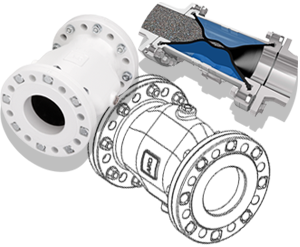39years as a family-run company
600new customers each year
20 000customers worldwide
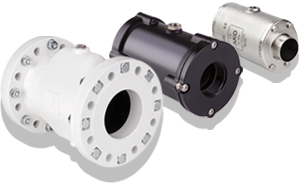
Pneumatic conveyor technology is used to transport all types of bulk goods in pipeline systems under negative (also see here vacuum conveyance) or positive pressure. The pressure is generated by blowing in or sucking out gases (usually air). As well as for transporting bulk goods, pneumatic conveyor technology is also a popular solution for transporting waste water. The valves have to be specially adapted to the requirements of pneumatic conveyance.

Different types of pneumatic conveyance are used depending on the medium being transported:
Dilute phase conveying:
In dilute phase conveying, the medium is transported at the highest velocity (above 20 m/s) compared to all other types of conveyance. The bulk goods are blown through the pipeline system in a suspended state. The ratio between the bulk goods and conveying gas is thus the lowest in comparison with other forms of conveyance. The wear on all of the components – especially around the valves – is greater because of the higher velocities involved.
Slug flow dense phase conveying:
In slug flow dense phase conveying (the second fastest conveying method at around 15 – 20 m/s), some of the bulk goods settle on the bottom of the pipes and slide along them pushed by the other suspended material flowing above. In comparison to dilute phase conveying, slug flow dense phase conveying is slower but the proportion of transported media is higher. The wear on the valves and other pipeline components is lower. Dune flow dense phase conveying – in which the deposited bulk materials are propelled forwards like slow-moving dunes – is comparable to slug flow dense phase conveying.
Plug flow dense phase conveying:
In plug flow dense phase conveying, the proportion of transported medium is so large that individual plugs form within the pipelines that fill the entire diameter of the pipe. These plugs are pushed through the system by the cavities behind them filled with conveying gas – or they are pulled through the pipeline system in negative pressure systems. The flow velocity in plug flow dense phase conveying is around 3 – 10 m/s. However, the flow volume is higher than slug flow dense phase conveying or dilute phase conveying, while the demands placed on the installed valves and components is lower again than the previously described conveying methods.
Extrusion flow dense phase conveying:
Extrusion flow dense phase conveying involves the conveyance of an uninterrupted, continuous dense stream of material in which a mixture of gas and solid material filling the full surface of the pipeline is pushed or pulled through the pipeline. This type of pneumatic conveyance is a popular solution for bulk goods with a broad range of grain sizes. However, the flow velocity is relatively low and can only be maintained with the use of additional auxiliary equipment such as injection valves. Depending on the bulk goods being conveyed, flow velocities of around 7 -15 m/s can be achieved with the help of the auxiliary equipment.
Pinch valves can be used in dilute phase, slug flow, plug flow and extrusion flow conveying without any problems and are thus suitable for all standard types of pneumatic conveying technology both as control or shut-off valves.
Due to the robust and anti-abrasive construction of the components that come into contact with the media (the connections and the rubber sleeve inside the valve), pinch valves can also be used even for high-wear dilute phase conveying. Special abrasion-resistant compounds have been developed especially for the installed sleeve that guarantee a long service life even with highly abrasive bulk goods.
In addition, all of the pinch valves from AKO also have a constriction-free and dead space-free design ensuring there is no turbulence and no opportunities for blockages to form.
When any maintenance work is due on the pinch valves, it can be quickly and easily completed on-site by the company's own personnel. This reduces system downtimes for maintenance and any associated costs. Depending on the nominal size of the valve, it only takes a few minutes to dismantle the valve, carry out the maintenance work (e.g. replacing the sleeve) and install it again.
We provide maintenance videos for every type of valve that explain the process step by step.
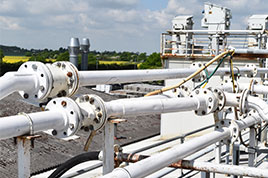
A manufacturer of drainage systems made out of polymer concrete uses pinch valves from AKO in pneumatic conveyance.
Find out more about what bulk goods our pinch valves are used to control in this plant...
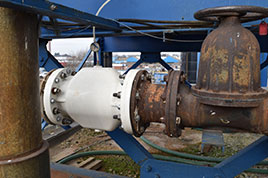
A manufacturer of steel cables uses pinch valves for removing accumulated acidic water.
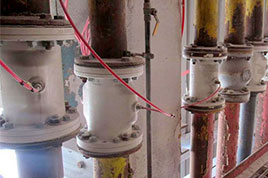
A glass recycling company uses pinch valves in the pneumatic conveyance of additives.
Read about how exactly pinch valves are used in pneumatic conveyor technology...
Global market leader
39years as a family-run company
600new customers each year
20 000customers worldwide

Unique delivery promise
< 0.2%complaint rate
> 99%customer satisfaction
30sales partner worldwide
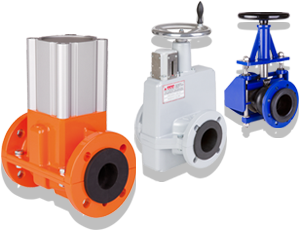
Widest pinch valve product range
10 000pinch valve variants
2 500variants available ex stock
100 000units sold each year
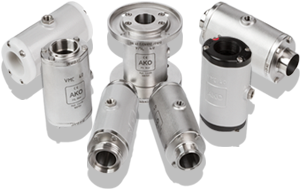
Extensive service activities
80CAD formats
32assembly & animation videos
16multilingual documentation
